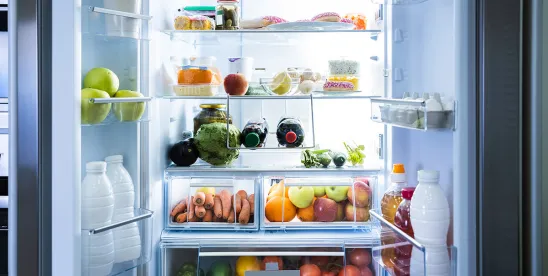On October 11, 2024, the Environmental Protection Agency (EPA) published its latest rule in a suite of measures to address hydrofluorocarbons (HFCs) under the American Innovation and Manufacturing (AIM) Act. In the nearly four years since the AIM Act was enacted and two years since President Biden signed the Kigali Amendment to the Montreal Protocol, EPA has approached its mandates to reduce HFCs with vigor. This latest rule establishes what EPA calls an Emissions Reduction and Reclamation Program to address leaks from refrigeration and air conditioning equipment. At a high-level, this rule will be most impactful to entities in the refrigeration, air conditioning, and heat pump sector, including supermarkets, cold storage warehouses, refrigerated transport, and manufacturing facilities.
The rule includes requirements for:
- Leak repair;
- Automatic leak detection (ALD) systems;
- Servicing and repair of supermarket refrigeration systems, refrigerated transport, and commercial ice makers.
For entities accustomed to EPA’s requirements for ozone depleting substances in refrigeration and air conditioning under Clean Air Act section 608, much in this rule will feel familiar. But there some notable differences and expansions in these HFC regulations, which are highlighted below.
The rule also contains AIM Act requirements for fire suppression equipment, HFC reclaimers, and disposable cylinders, as well as alternative standards for certain ignitable used refrigerants under the Resource Conservation and Recovery Act (RCRA). This alert does not focus on those requirements. Entities impacted by those provisions should carefully review their compliance requirements under the rule.
New HFC requirements can be found in the regulations at 40 C.F.R. Part 84, Subpart C. Any party seeking to challenge the final rule has 60 days from the date of publication in the Federal Register to file a petition for judicial review.
Impacted Entities
The reach of this rule is broad—the North American Industry Classification System codes of potentially affected entities spans more than a page of the Federal Register notice. As EPA describes it, the rule may affect entities that own, operate, service, repair, recycle, dispose, or install equipment containing HFCs or their substitutes; those that recover, recycle, or reclaim HFCs or their substitutes; and those that manufacture, sell, or distribute equipment containing HFCs and their substitutes.
EPA has divided HFC-affected entities into sectors and subsectors, similar to EPA’s organization of affected industries under Title VI of the CAA. Given the breadth of the affected businesses and the complexity of the rule, entities should closely review rule requirements to determine if they apply to their business.
Rule Requirements and Compliance Deadlines
-
Leak repair. The rule’s leak repair requirements apply to appliances with a charge size of 15 pounds or more and that contain an HFC or substitute for an HFC with a global warming potential greater than 53. EPA finalized a narrow exemption for the leak repair requirement for residential and light commercial air conditioning and heat pumps.
Similar Title VI requirements have historically applied to appliances with a charge size of 50 pounds or more. This lower applicable charge size will increase the universe of regulated appliances subject to these requirements. Other than the change in charge size applicability, EPA assures entities in this final rule that the leak repair provisions are otherwise “identical or similar to” requirements for ozone-depleting substances (ODS) refrigerants, including the methodology for determining the leak rate, repair timing, and verification tests.
Entities must still calculate a leak rate every time refrigerant is added to an appliance (unless certain exceptions apply), use an annualizing or rolling monthly average method for calculating a leak rate, and repair an appliance within 30 days (or 120 days if an industrial process shutdown is required) of refrigerant being added if the appliance is leaking above the applicable leak rate. Leak rate thresholds vary by category of appliances (e.g., a 20% leak rate trigger for commercial refrigeration, 10% for refrigerated transport – rail).
Compliance date: January 1, 2026
-
ALD systems. In a departure from past regulations for ODS refrigerants, EPA is requiring the use of ALD systems in new and some existing refrigerant-containing appliances in the industrial process and commercial refrigeration subsectors. The requirement applies to appliances with a charge size of 1,500 pounds or more that contain an HFC or a substitute for an HFC with a global warming potential greater than 53.
When an ALD detects a leak in a system the owner or operator must calculate a leak rate or preemptively repair the leak. While preemptive repair isn’t required and you still need to calculate a leak rate when you add refrigerant, it does get you out of performing initial or follow-up verification tests if the calculated leak rate is below the applicable threshold.
Compliance dates:
- Beginning January 1, 2026, any new refrigerant-containing appliances with a full charge of 1,500 pounds or greater in the industrial process and commercial refrigeration subsectors must install an ALD.
- For existing appliances in those subsectors that were installed on or after January 1, 2017, and before January 1, 2026, an ALD must be installed by January 1, 2027.
- Servicing and repair of refrigerant-containing appliances. Servicing and repair of refrigerant-containing appliances in certain subsectors must be done with reclaimed HFCs. Affected subsectors include: supermarket systems, refrigerated transport, and automatic commercial ice makers. Retrofits are considered a servicing and repair activity if the equipment is being retrofitted to use a substance that contains HFCs. In its final rule, EPA excluded stand-alone retail food refrigeration from these requirements and gave entities one more year than proposed for compliance. EPA did not finalize requirements to use reclaimed HFCs in initial charging of refrigerant-containing equipment.
Compliance date: January 1, 2029
AIM Act Big Picture
The AIM Act gives EPA three clear directives: (1) phase down the consumption and production of HFCs by 85% of historic baselines by 2036; (2) facilitate the transition to the next generation of refrigerant technology by restricting the use of HFCs; and (3) maximize HFC reclamation and minimize HFC releases from equipment. EPA’s work to phase down consumption and production under the first directive is well underway with its HFC Allowance Allocation Program. As to the second directive, EPA issued its Technology Transitions Rule in 2023. This final rule implements EPA’s third directive. EPA estimates that its latest rule will result in compliance costs of up to $1.5 billion from 2026 through 2050.
This quick regulatory work is evidence of the seriousness of EPA’s focus on HFCs. And it’s no wonder: of the 18 HFCs the AIM Act lists for regulation, 11 listed HFCs have over 1,000 times more global warming potential than carbon dioxide.
Takeaways
Entities can expect that EPA will focus on compliance and enforcement of this final rule, and the other rules in EPA’s suite of HFC regulations. The use, importation, and production of HFCs is one of three named focus points in EPA’s Mitigating Climate Change National Enforcement and Compliance Initiative (NECI). This NECI will be in place until at least 2027. On September 6, EPA issued an enforcement alert, warning of criminal and civil enforcement, for the illegal importation of HFCs.
Given the nature of the compliance requirements, record management will be paramount. While EPA’s inspection opportunities might be limited given the nature of the rule, you can anticipate EPA will be scrutinizing reports and requesting records using Clean Air Act section 114 requests (the AIM Act is enforced using Clean Air Act tools) to determine compliance and evaluate potential enforcement.
Entities preparing for compliance dates under the rule should set up robust compliance programs to ensure timely compliance with repair requirements and other provisions of the rule. Given the spotlight on HFCs, those programs should also ensure all necessary records are accurate, complete, and well organized.





 />i
/>i

